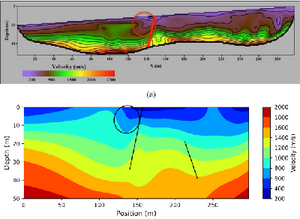İsa Eren Yıldırım, M.Sc.
Department of Scientific Computing
February 2022
Supervisor: Ömür Uğur (Institute of Applied Mathematics, Middle East Technical University, Ankara)
Co-Supervisor: Umair bin Waheed (Geosciences, King Fahd University of Petroleum & Minerals (KFUPM), Saudi Arabia)
Abstract
In Seismic prospecting, huge amounts of data are collected and processed to infer the structural and lithological composition of the subsurface. The key step in this procedure is velocity model building. First arrival traveltime inversion is one of the velocity model building tools commonly used for predicting near-surface velocity structures in seismic exploration. The underlying mathematical model describing the connection between the data (traveltimes) and the model parameters (velocity) is the Eikonal equation, which is a first-order non-linear partial differential equation. Conventionally, the inversion is carried out using ray-based methods or gradient-based algorithms. Though the gradient-based algorithms find the gradient that is needed to update the model parameters without requiring ray tracing, it can be computationally demanding. On the other hand, despite its robustness and efficiency ray-based methods suffer from complex regions as the ray theory relies on the high-frequency approximation. Instead of using these approaches for a traveltime inversion problem, we propose a machine learning based approach, specifically harnessing the physics informed neural networks exploiting the mathematical model represented by the Eikonal equation to estimate the near-surface subsurface velocities. Training neural networks with the aid of physics defining the underlying problem overcomes some of the challenges inherent in the traditional approaches such as requiring acceptable a priori information, and incorrect parameter updates in the optimization. Through synthetic tests and the application of real data, we show the reliability of the physics informed machine learning based traveltime inversion which can be a potential alternative tool to the traditional tomography frameworks.
Keywords: inverse problems, machine learning, seismic traveltimes, physics informed neural networks
